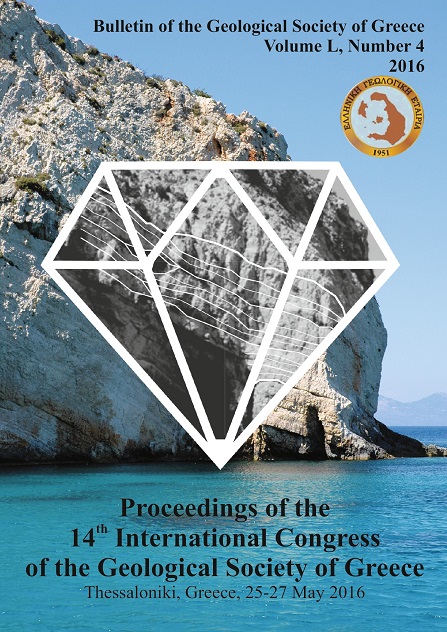GEOCHEMICAL CHARACTERISTICS OF THE MAFIC ENCLAVES AND THEIR HOSTS FROM NEOGENE ERENLERDAGI VOLCANITES, AROUND YATAGAN VILLAGE AND SAĞLIK TOWN (KONYA), CENTRAL TURKEY

Abstract
Late Miocene to Pliocene volcanism is represented by development of lava domes, nuée ardentes and pyroclastic fall and flow (ignimbrites) deposits in the WSW and NW of Konya city. The lava dome contains various mafic microgranular enclaves (MMEs), which have various size (a few cm to a few meters), shape (ellipse/sphere to rounded), with a well-developed chilly zone. The MMEs samples are situated on mostly basaltic andesite and andesite, and a few MME samples on basaltic trachyandesite area while the host rocks are concentrated on dacite and andesite areas. The felsic samples have more fractionated chondrite-normalised REE pattern (La/YbN: 9.5-18.1) than MMEs (6.7-16.0) ones, but both have slightly developed negative Eu anomaly (Eu/Eu*: 0.67-0.89 in felsic rocks, 0.68-0.87 in MMEs). In primitive mantlenormalized spider diagram, the MMEs and felsic rocks have negative Nb, Ta, P and Ti anomalies, indicating some subduction component in their genesis. Based on geochemical data, the MMEs are suggested to have been formed by hybridization of basic magma mingled with partially crystallized felsic magma.
Article Details
- How to Cite
-
Koçak, K. (2016). GEOCHEMICAL CHARACTERISTICS OF THE MAFIC ENCLAVES AND THEIR HOSTS FROM NEOGENE ERENLERDAGI VOLCANITES, AROUND YATAGAN VILLAGE AND SAĞLIK TOWN (KONYA), CENTRAL TURKEY. Bulletin of the Geological Society of Greece, 50(4), 1887–1894. https://doi.org/10.12681/bgsg.11928
- Section
- Petrology and Mineralogy

This work is licensed under a Creative Commons Attribution-NonCommercial 4.0 International License.
Authors who publish with this journal agree to the following terms:
Authors retain copyright and grant the journal right of first publication with the work simultaneously licensed under a Creative Commons Attribution Non-Commercial License that allows others to share the work with an acknowledgement of the work's authorship and initial publication in this journal.
Authors are able to enter into separate, additional contractual arrangements for the non-exclusive distribution of the journal's published version of the work (e.g. post it to an institutional repository or publish it in a book), with an acknowledgement of its initial publication in this journal. Authors are permitted and encouraged to post their work online (preferably in institutional repositories or on their website) prior to and during the submission process, as it can lead to productive exchanges, as well as earlier and greater citation of published work.


